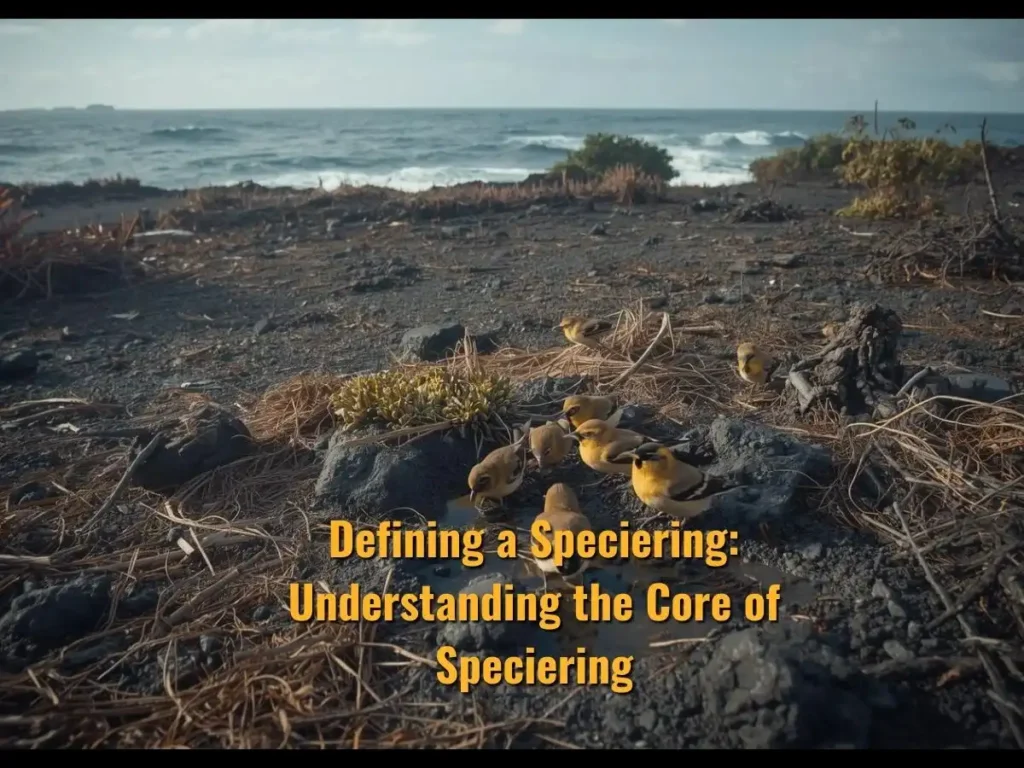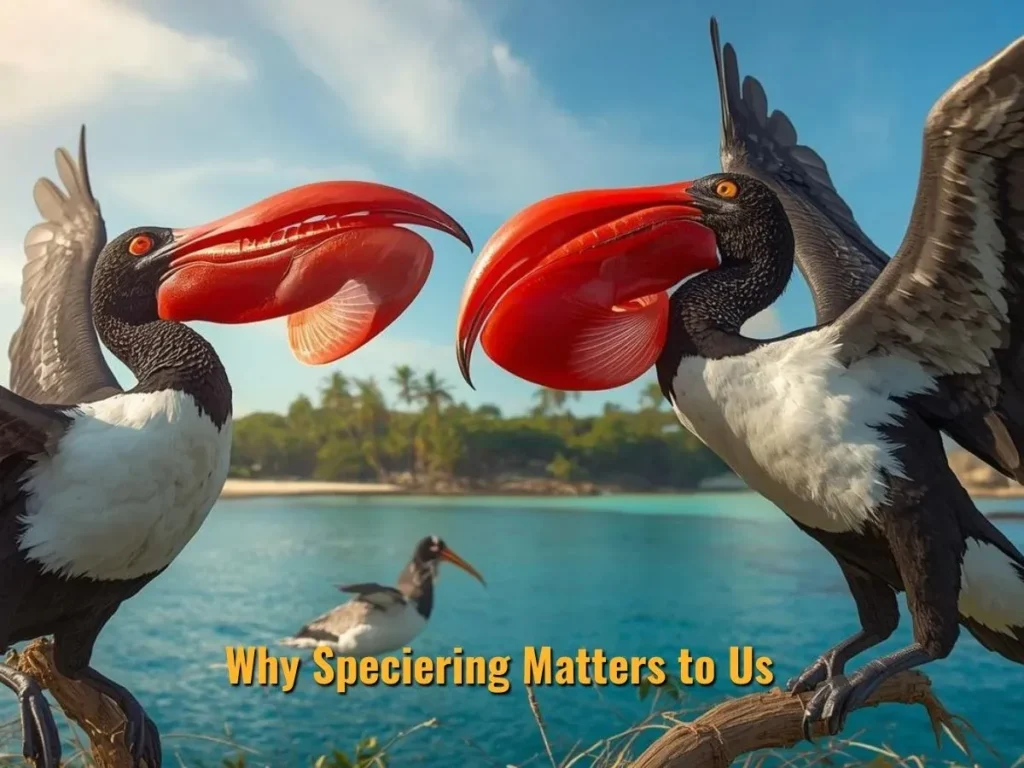Introduction
Speciering is an enthralling biological process that shows the development of new species from a common ancestor. From witnessing the birth of a new form of life, the tale of life’s diversification is unfolding right now.
This journey from one to many is a powerful force of nature, propelling, in the very near future, the vast diversity we see today.
Every being, from the tiniest microbes to the largest mammal, holds a history with this process that is crucial to present-day science and conservation.
Defining a Speciering: Understanding the Core of Speciering

How Do Scientists Classify Life?
To understand Speciering, one must first know what a species is. You might think it is just a group of given organisms that look alike or behave similarly. That definition, however, has been a bone of contention for centuries.
The most widely accepted idea, however, is the Biological Species Concept. It states that members of a species form a group that can mate and produce viable offspring, which are reproductively isolated from other such groups.
For instance, a horse and a donkey can mate. Their offspring are fewer, but a mule is sterile. Therefore, the horse and donkey are separate species.
However, this concept is far from perfect. It also fails to apply to organisms that reproduce without partners or sex, such as bacteria. For this reason, scientists also employ alternative methods to define a species.
These include:
- Morphological Species Concept: Based on physical traits.
- Ecological Species Concept: Based on what an organism does in its environment.
- Phylogenetic Species Concept: Based on shared evolutionary lineage.
Regardless of how we classify them, species formation is the process by which populations undergo change and divergence until they become independent.
The Engine of Change: Mechanisms Driving Speciering
The Key Factors That Create New Speciering
Speciation does not occur overnight. It is an extremely slow process shaped by a variety of potent evolutionary factors that act upon it over long epochs. These factors lead the populations down disparate paths.
Genetic Mutations and Variation
The first major element would be a genetic mutation. These random changes in an organism’s DNA will lead to random genetic variation within the population.
Most mutations may be harmless, but some are beneficial for the survival of a trait in the present individual.
Natural Selection and Adaptation
Natural selection takes over here: Depending on different environmental conditions, organisms possessing fit traits will survive better. Now those traits get passed on via reproduction, a process called adaptation.
This basically changes the entire population over time. Ultimately, you have a population that is well-adapted to its environment.
Genetic Drift and Gene Flow
Genetic drift is also an important consideration. Its definition is random changes in the gene pool of a population.
This will be especially relevant in small groups, where random chance plays a greater role. If a population experiences a natural catastrophe, then the surviving individuals will carry only a tiny fraction of the original alleles.
Hence, this will result in a significantly different new population. This could drive speciation.
The last stage is reproductive isolation, whereby barriers to interbreeding evolve, resulting in no further exchange of genes between these two sets.
The Different Paths to a New Speciering
How Geographic Barriers Affect Speciering
Speciering may occur in different ways. These different ways depend on the location of a population. Here are the four main types.
- Allopatric Speciering: This is the most recognized way. Here, a physical barrier, such as a river or mountain, divides a population. Over time, each group will undergo changes. Finally, they become so dissimilar that they are unable to mate with each other. For example, many species of finches in the Galapagos Islands have evolved this way.
- Sympatric Speciering: This is a very curious type of speciation. New species are forming right where they are. This mostly happens due to a change in either behavior or diet. For instance, an insect that once laid eggs on one type of tree is now laying eggs on a different kind of tree. They are diverging into different species.
- Parapatric Speciering: Here, the populations live side by side but not completely separate. There is some limited contact, yet it can still lead to speciation.
- Peripatric Speciering: Allopatric speciation is quite similar; however, a small population buds off from a larger one. The small population is more susceptible to random genetic changes, which can lead to rapid speciation.
Why Speciering Matters to Us

Understanding speciation is more than an academic exercise; it has substantial implications in our lives.
Conservation Biology
For protecting biodiversity, we need insight into how Speciering takes place. Climate change and habitat destruction stress our world even more.
So understanding population evolution helps us identify species. This, in turn, enables us to develop a more effective conservation strategy.
Agriculture and Food Security
Speciation knowledge greatly assists farming practice. This implies that they can exploit the genetic basis of these traits to select plants for breeding, resulting in new, more resilient crops. It is important in plants that resist disease and pests.
Medicine and Public Health
The evolution of germs is a primary factor that plays a crucial role in medicine. New disease strains are essentially Speciering events. Studying these changes helps scientists predict when a new disease might emerge and design more effective vaccines and therapeutics.
Human Influence on Evolution
Humans are becoming a significant force in the evolution of life. Our ways, pollution, or city systems create industries.
For example, a particular species of mosquito now lives in the London Underground. It no longer mates with its relatives who live above the ground. It is, therefore, a separate species.
Conclusion:
Speciering is quite an astounding and ongoing biological process, keeping life on the planet diverse and healthy.
Evolution is one of those phenomena that brings about both slow and rapid changes due to human forces; hence, it is a powerful force.
At its core, an engine is biodiversity that enables life to stand against all odds. That makes understanding this process highly significant in securing our tomorrow.
You can continue your discovery journey by visiting more of our articles and learning more about the fascinating world of evolution!
FAQs
What is speciation?
Speciation is the evolutionary process by which new biological species arise from existing ones.
How long does speciation take?
Speciation can take thousands or millions of years; in rare instances, it may occur almost instantly, as seen in the case of polyploidy in plants.
Can speciation be caused by humans?
Yes. Activities such as habitat fragmentation, pollution, and the introduction of invasive species can accelerate or create new speciation events.
What are the main types of speciation?
The main types of speciation are allopatric (with geographic barriers), sympatric (occurring within the same area), parapatric (on adjacent regions), and peripatric (from small isolated populations).
Are mules a new species?
No, mules are not a new species because they are sterile hybrids and cannot produce fertile offspring of their own.




